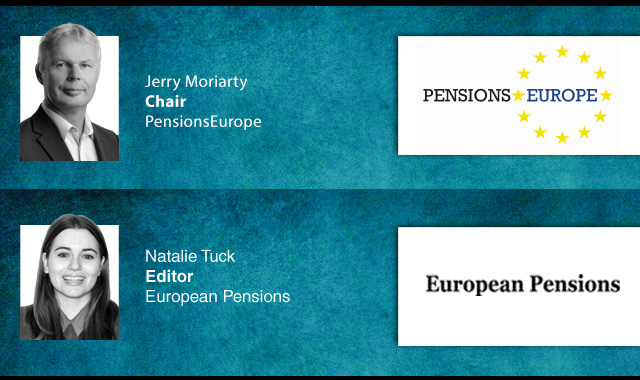Countries with funded pension systems hold up to three times more risk capital per worker than their pay-as-you-go (PAYG) peers, according to a new study by the Association of the Luxembourg Fund Industry (ALFI) and McGill University, which warned that Europe is missing out on trillions of euros in productive investment.
The report, Europe’s Productive Capital Gap: Mobilising Pension and Household Savings to Scale Up Risk Capital, found that workers in countries with capitalised pension systems, such as Sweden, Denmark, the Netherlands, Australia and Canada, each hold around €209,000 in risky financial assets, compared to €91,000 in France and just €66,000 in Germany.
If Germany and France had adopted similar funded models, their combined stock of risk-bearing assets could now be around €15trn, compared with €5.6trn at present, the report said.
The researchers attributed the gap not to sudden reform but to steady structural change.
“This gap emerged gradually over 20 to 30 years of consistent, incremental pension reform,” the authors wrote, noting that funded schemes enable compounding returns, greater equity exposure and a more resilient retirement system over time.
Countries with high savings per worker also tended to allocate a larger share of those savings to equities and other risky assets, creating what the study calls a “powerful amplification mechanism”.
Sweden, for example, invested 75 per cent of pension assets in risk capital, compared to 41 per cent in Germany.
The report also showed how exposure to equities through public and occupational pensions can encourage households to take more investment risk in their private savings, further deepening national capital markets.
ALFI chief executive, Serge Weyland, said the findings demonstrated the economic potential of well-structured pension reforms.
“This study highlights how well-designed pension systems can mobilise retirement savings into productive risk capital,” he explained.
“Europe has a unique opportunity to transform these savings into a powerful driver of growth. With the right governance, scale, and long-term vision, pension reforms can unlock the risk capital our economies need.”
McGill University associate finance professor, Patrick Augustin, added: “The most robust pension systems are not simply those that accumulate more savings, but those that allocate capital more efficiently - across public, occupational, and private pillars - through scale, governance, and long-term investment discipline.”
Meanwhile, the study identified common features among the most successful pension systems, including professional asset management, low-cost investment vehicles, portability, broad participation and fiscal incentives.
For Europe, the authors proposed two possible pathways: A pan-European 'super-default' fund, similar to Sweden’s AP7 or the UK’s NEST, to offer all workers access to cost-efficient, equity-heavy default options; and the creation of employer gateway platforms that pool contributions across companies to achieve scale and reduce costs.
They argued that reforms need not be abrupt or uniform across member states, but should be built gradually to foster political consensus while encouraging long-term savings and efficient investment.
The study concluded that Europe’s ageing populations and continued reliance on PAYG systems risk deepening the continent’s “productive capital gap”.
Incremental, well-governed pension reforms, it suggested, could both strengthen retirement outcomes and unlock the capital needed to boost European growth.
Earlier this year, the European Commission (EC) launched its new Savings and Investments Union (SIU) strategy, outlining plans to encourage greater use of auto-enrolment, and to review the existing regulatory frameworks in place.
However, the Centre for European Policy (CEP) warned that the plans had come "too late", adding that additional efforts were "urgently needed" at both national and EU levels.
Latest News
-
Pension gap and VfM dominate Europe’s consumer risk landscape
-
Europe’s pension associations welcome IORP stress test results
-
AAE identifies ‘cross-cutting challenges’ of European pension tracking service
-
I&P Denmark hails govt’s 82% climate target as ‘strong signal to the world’
-
News in brief: 19 December
-
European insurtech firm Lumera acquires Acuity for undisclosed amount
Podcast: Stepping up to the challenge

In the latest European Pensions podcast, Natalie Tuck talks to PensionsEurope chair, Jerry Moriarty, about his new role and the European pension policy agenda
Podcast: The benefits of private equity in pension fund portfolios

The outbreak of the Covid-19 pandemic, in which stock markets have seen increased volatility, combined with global low interest rates has led to alternative asset classes rising in popularity. Private equity is one of the top runners in this category, and for good reason.
In this podcast, Munich Private Equity Partners Managing Director, Christopher Bär, chats to European Pensions Editor, Natalie Tuck, about the benefits private equity investments can bring to pension fund portfolios and the best approach to take.
In this podcast, Munich Private Equity Partners Managing Director, Christopher Bär, chats to European Pensions Editor, Natalie Tuck, about the benefits private equity investments can bring to pension fund portfolios and the best approach to take.
Mitigating risk
BNP Paribas Asset Management’s head of pension solutions, Julien Halfon, discusses equity hedging with Laura Blows
© 2019 Perspective Publishing Privacy & Cookies





Recent Stories